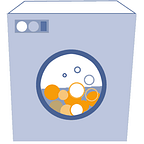Designing for Word of Mouth
How consumer mobile startups build “word of mouth” into their product.
There are only a handful of channels that mobile/web products can use to grow their user base. Andrew Chen recently categorized the main ones as being: paid acquisition, virality, SEO, sales, and partnerships. This article is about virality — specifically “word of mouth” which is often considered the most effective way to acquire users.
Wharton professor Jonah Berger lays out a great framework to think about virality which he terms “STEPPS” — social currency, triggers, emotion, public, practical value, and stories. To better understand this model and how we can apply it to building viral products, let’s look at some examples of services that are doing this well in the consumer mobile market today.
1.) Social Currency: We tell others about products that make us look interesting or cool
How do products make us look cool? They help stand out and feel like an insider. They provide a distinctive new experience.
An example of a product that made us feel special was Foursquare through its game mechanics associated with check-ins and mayorship. Remember that time that you became the mayor of your local bar or coffee shop. What did you do? You probably told your friends.
Many startups leverage the idea of being an insider to help spread the word. Pinterest did this in the early days where you had to be invited to use the service. Since the number of invites were capped, you looked good when you spread the word about Pinterest.
Why did people talk about Snapchat at the very beginning. Because it was novel — the app did something different from everything that was already out there (“disappearing photos”). Being different and a little bit controversial pays off because you become the topic of conversations.
2.) Triggers: Products are remembered more easily when associated with external cues.
Associating your product with a real life trigger is an awesome way to get your product remembered and talked about more. A product that has taken advantage of this concept to grow is Timehop with “Throw Back Thursday” #TBT.
Every Thursday, people share photos from the past. Timehop is a service to re-surface your past memories through your social media posts. If you look at the app store rankings of the app, you can see how it grows every Thursday.
3.) Emotion: We share things that make us happy or angry. But not things that make us sad or apathetic.
Uber’s PR tactics epitomize using emotion to get the word out. Getting ice cream on demand? That makes you happy right? Even if you don’t do it, you will probably share that it’s possible with friends just because you think it’s so awesome. Surge pricing during busy shopping periods, when there is a snowstorm, or during a big festival is happening — doesn’t that make you upset? Well, you’re more likely to talk about it because you are angry.
But even the idea of riding an Uber evokes an emotion. Instead of stressing out about driving in traffic, you relax in the back seat and zone out while you get to your destination. Great products evoke emotions and Uber is a perfect example of that.
4.) Public: It’s good to have a product that can be shown in public so other can see it.
What service do you use when you want to find out what song is playing when you are out? It’s likely Shazam.
How did you find out about it? Probably through a friend that used it while you were with him. Having a service that is visibly used in public makes it more likely to be asked about and thus grow virally.
5.) Practical Value: If a service provides value for you, then you are more likely to share it.
Yelp is a great example of practical value driving user growth. People always have questions about where to eat, shop, or get something done and Yelp solves this through their review system. How many times have you suggested to a friend to “just yelp it” — probably a lot.
6.) Stories: People enjoy telling stories, and having a service that is part of the narrative makes it more likely to spread.
Have you taken a vacation recently? Maybe you used Airbnb to find a place to stay. When you came back from your vacation, I’m sure your friends and family asked you about your experience. And if you took Airbnb, you more than likely mentioned that you used their service. Maybe you even mentioned how great your host was or how they left a notebook of insider tips. By being part of the story, Airbnb has effectively grown virally.
You don’t need all six elements to become viral but the more your app includes, the more likely it will take-off. One thing to remember is that some of these factors work for a shorter period of time. For instance, novelty works when you are new but it won’t succeed without a product that people actually want to use. These tactics are just ways to jump start and sustain growth but in the end you have to have a product that people want to use.
Sasank Reddy and Jeff Mascia are the co-founders of Kullect where they built Shout Photo Messenger. You can follow the “Growth Engineering Notebook” to get more updates about practical user acquisition techniques.
